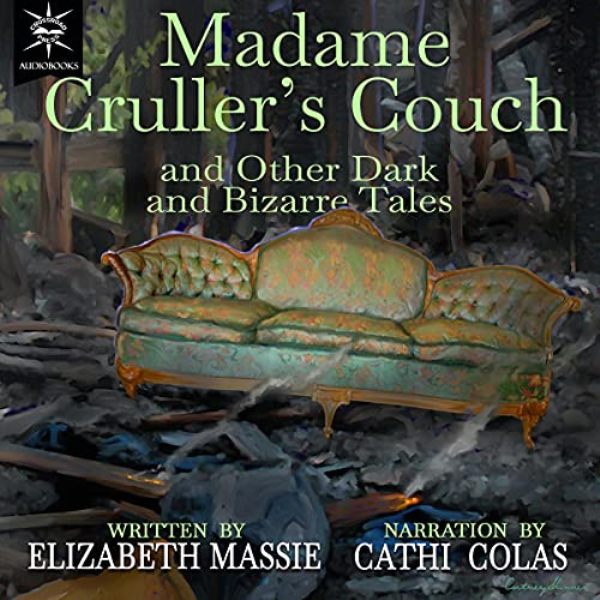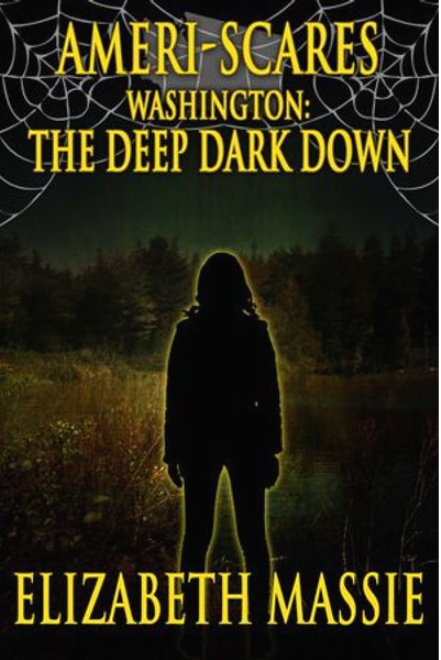
On this month's Special Page:
Bram Stoker Award-winner Elizabeth Massie gives us writing advice
IN THE "SPECIAL PAGE" ARCHIVES:
Joe R. Lansdale
Christopher Golden
Mort Castle
Josh Malerman
Ellen Datlow
Bentley Little

Elizabeth Massie began her professional publishing career in 1984 with the sale of her first short horror story, “Whittler,” to The Horror Show magazine. Best-selling author Bentley Little has said, “Elizabeth Massie is personally one of my favorite authors. Her writing is true, heartfelt, and wildly original. She is one of the greats.”
She has since had over thirty horror novels and collections published. Her short stories have appeared in countless magazines and anthologies as well as several “years’ best” editions. Her novel, Sineater won a Bram Stoker Award as did her novella, Stephen.
Elizabeth presents creative writing workshops up and down the East Coast to students in grades 3-12 as well as at the university level. She’s been a member of the human rights organization Amnesty International for 30 years. Elizabeth loves geocaching, hiking, and chai, and hates cheese, snobbery, and doing laundry.
Although Massie also writes historical fiction, media tie-ins, and nonfiction, she says, “Writing entertaining and sometimes thought-provoking horror will always be one of my favorite creative ventures.”
She lives in the Shenandoah Valley of Virginia where she was born and grew up, and she shares life and abode with her husband, illustrator/artist Cortney Skinner. She can be reached through Facebook.
IT’S ALWAYS BEST TO START AT THE BEGINNING
by Elizabeth Massie
The title quote for this article comes from the film version of The Wizard of Oz. Glenda tells Dorothy that to get to Oz, which is a long way off, she must find the beginning of the Yellow Brick Road and start walking from there. There was no short cut, no easy big jump from Munchkin Land to Oz. Yes, there was going to be some scary-ass shit along the way. And no, not all the crossroads would be properly marked. Yet Dorothy desperately wanted to get to Oz, and so she sucked it up, tossed her pigtails over her shoulder, and took off with Toto.
What does that have to do with writing horror?
I’ve been in the biz for a gazillion years, give or take a zill. My first published short story, “Whittler,” debuted in The Horror Show magazine in its Winter 1983-84 edition. I’d been writing stories for a many years before that, and the sale of “Whittler” was my big breakthrough (I earned all of two dollars for the story, oh yeah, bay-bee!) Since then I’ve had quite a few short stories, novels, poems, and articles published. And since then I’ve had countless people, who want to be writers, ask me, “How do I get published?” Not, “How do I get started as a writer?” or “What advice to you have for a new writer?” but “How do I get published?”
Okay, now think about that for a moment. Someone who has barely put pencil to paper or fingertips to keyboard wants to know how to get published.And very often they want to be published pretty muchright away, ‘cause, you know, instant gratification.And what will come of being published? It will make them famous? Give them a lot of attention, likes, clicks, thumbs up? It will bring in lots of money, perhaps, and they can quit school or their day jobs?
None of this is a surprise, actually. I’m always getting ads via e-mail and social media, ads from companies wanting to help me get my book “published,” and I’m definitely not the only one. These companies offer all sorts of packages with covers and formatting…what could be easier? Yet although self-publishing has become more and more common (and yes, I’ve tried it out several times myself and enjoyed the process), a large chunk of self-published horror fiction suffers from “amighty need.” A mighty need of rewrites, of rethinking, of reimagining, of more time devoted to development; in need of solid plotting, of accessible characters, of well-crafted settings.
My grandmother used to say, “Don’t put the cart before the horse,” which was her old Southern lady way of saying, “It’s always best to start at the beginning.” And in the case of writing horror (or writing just about anything), that means taking the time (yes, time) to learn to write by writing and reading and writing and reading. It means taking the time to improve by listening to and weighing advice, suggestions, and other input by those who are willing to read what you write, and not getting pissed off by that advice, suggestion, or other input. It means to take your lumps. It means pushing yourself along that sometimes treacherous, often frustrating, at times confusing or even terrifying Yellow Brick Road. And with all that, you just might get you where you want to go.
So, let’s start at the beginning. A few tidbits from horror writing 101 – some basics – for those who want to write and possibly find their workpurchased and published someday:
#1. Every story features at least one problem and one solution or attempted solution. A story without a conflict or struggle or danger that a character or characters must tackle is not a story. A slobbering monster wreaking havoc and people dying in wild and various ways is not a story. A serial killer murdering screaming victim after screaming victim is not a story. However, a slobbering monster wreaking havoc and a character destroying or at least trying to destroy the monster is a story. A character facing down, trying to stop, or even ending up joining forces with the serial killer is a story. No, neither of those scenarios as I shared is particularly scary or engrossing, but each is, indeed, thebarebones of a story. As a writer it’s your job to put the skin on them, flesh them out. Think the possibilities through, let the various terrifying situations run through your head. If one doesn’t work out – if it’s boring or runs into a roadblock –backtrack and start again. Take a deep breath. This isn’t a race. Give yourself time to discover the best storyline.
#2. Characters aren’t just one-dimensional game pieces you move around to serve the plot. I would even go so far as to say characters are the most important aspect of your story. Characters are people.Sure, okay, they aren’t real people but readers will want them to come across as real. Because otherwise, why give a shit? Readers want characters they can cheer for, suffer with, cry for, hate, love, and at times even imagine that they are them. Choose one or several main characters and get to know them before you throw them into a horrific situation. What are their weaknesses and strengths? What are they afraid of? What got them to where they currently are? Who are their friends or enemies? The best writers, in my humble opinion, are those who are fascinated by people, who pay attention to people, who want to understand people. Bring that to your horror story and I bet I’ll want to keep reading.
#3. Setting is critical to a story. Even if yourchilling tale is set in a cellar and the character(s) never leaves, the reader must be given a good feel for where they are. I want to know about the earthen walls, the cobwebs, the stinkbugs, the cracked concrete floor. I want to smell the mildew and old cardboard boxes. I want to hear the footsteps overhead. I want to shiver in the damp. Don’t go overboard as that will slow down the story. But keep the five senses in mind, and sprinkle details here and there so we can suffer along with your poor trapped protagonists.
#4. Horror and gross-outs aren’t the same thing. Several years back I was one of many authors writing for an ongoing blog called “Storytellers Unplugged.” One of my blogs was titled “Poop on a Plate.” In it I challenged the notion that some younger writers have that throwing lots of shit, vomit, piss, etc. into a story makes it “horror.” No, that makes it gross. Nausea isn’t, in itself, fear. Yes, both are gut reactions. And yes, some of the most disturbing, powerful horror novels also include scenes that make your stomach flip. But reading something and thinking “EWWW!” is not the same reading something and being cut through with terror. Just something to keep in mind.
Of course there is a whole lot more to writing horror than the four points given above. But it’s a good and solid start. Sure, you might think what I offer doesn’t apply to you. And maybe it doesn’t.
But maybe it does.


